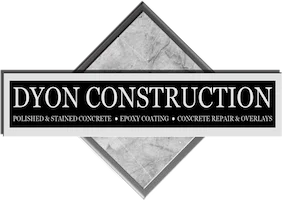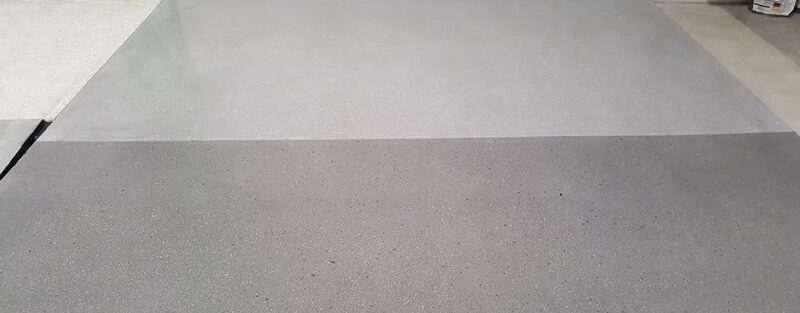Introduction
Choosing the right finish for your concrete surfaces is crucial for both aesthetics and durability. Concrete sealing and concrete polishing are two prevalent methods, each with unique properties and benefits. This article explores the differences between these two techniques, examining their processes, advantages, costs, and ideal applications to help you make an informed decision.
Overview of Concrete Sealing
Concrete sealing involves applying a protective layer to the concrete surface, enhancing its durability and resistance to various elements. Sealers can be classified into two primary types: penetrating sealers and topical sealers. Penetrating sealers, such as silicates and siliconates, infiltrate the concrete’s pores, creating a chemical barrier that repels water and contaminants. Topical sealers, including acrylics, epoxies, and polyurethanes, form a protective layer on the surface, providing a glossy or matte finish while shielding the concrete from stains, chemicals, and wear.
Overview of Concrete Polishing
Concrete polishing is a mechanical process that transforms a concrete surface into a smooth, glossy finish. This technique involves grinding the concrete with progressively finer abrasives, followed by polishing with diamond-infused pads. The result is a highly reflective surface that can mimic the appearance of polished stone or marble. Polishing enhances the natural beauty of concrete, creating a sleek and sophisticated look without the need for additional coatings or sealers. Polished concrete is popular in both residential and commercial settings due to its aesthetic appeal and low maintenance requirements.
Benefits of Concrete Sealing
Concrete sealing offers several significant benefits. Firstly, it provides superior protection against moisture penetration, which can lead to cracking, spalling, and other forms of deterioration. Sealers also guard against stains from oil, chemicals, and other substances, making sealed concrete easier to clean and maintain. Additionally, certain sealers enhance the surface’s slip resistance, improving safety in wet conditions. By extending the lifespan of concrete and preserving its appearance, sealing is a cost-effective way to maintain durable and attractive surfaces.
Benefits of Concrete Polishing
Concrete polishing boasts numerous advantages that make it an attractive option for various applications. The polished surface is highly durable and can withstand heavy foot traffic and machinery, making it ideal for commercial and industrial environments. Polished concrete is also low maintenance, requiring only regular cleaning to retain its shine and luster. The process of polishing increases the surface’s reflectivity, enhancing ambient lighting and reducing the need for artificial illumination, which can result in energy savings. Additionally, polished concrete is eco-friendly, as it utilizes the existing concrete slab without the need for additional materials or coatings.
Cost Comparison
When comparing costs, concrete sealing typically involves a lower initial investment compared to polishing. The cost of sealing depends on the type of sealer used and the surface area to be covered. Penetrating sealers are generally less expensive than topical sealers, but both options are relatively affordable and quick to apply.
Concrete polishing, while more costly upfront, offers long-term savings due to its durability and minimal maintenance requirements. The cost of polishing varies based on the level of sheen desired and the condition of the existing concrete. While the initial expense is higher, the longevity and low upkeep of polished concrete can offset the initial investment over time.
Maintenance Requirements
Maintenance for sealed concrete involves periodic reapplication of the sealer to maintain its protective properties. The frequency of resealing depends on the type of sealer and the level of wear and exposure. Regular cleaning with mild detergents is necessary to keep the surface looking its best and to prevent the buildup of dirt and contaminants.
Polished concrete, in contrast, requires minimal maintenance. Routine cleaning with a dust mop and occasional wet mopping with a neutral pH cleaner is usually sufficient to preserve its appearance. Unlike sealed surfaces, polished concrete does not require reapplication of coatings, making it a hassle-free option for busy environments.
Ideal Applications for Each
Concrete sealing is ideal for areas where protection from moisture, stains, and chemicals is paramount. This makes it a popular choice for driveways, garages, basements, and exterior patios. Sealed concrete is also suitable for industrial settings where spills and heavy use are common, providing a durable and easy-to-clean surface.
Polished concrete shines in commercial spaces, retail environments, and modern residential interiors where aesthetic appeal and durability are essential. Its high-gloss finish and sophisticated look make it a preferred choice for showrooms, office buildings, restaurants, and contemporary homes. The enhanced reflectivity and low maintenance requirements make polished concrete a practical and visually appealing option for high-traffic areas.
Conclusion
Concrete sealing and concrete polishing each offer distinct advantages, making them suitable for different applications and preferences. Sealing provides robust protection and an easy-to-maintain surface, ideal for areas exposed to moisture and chemicals. Polishing, on the other hand, delivers a sleek, durable finish that enhances the natural beauty of concrete and requires minimal upkeep. By understanding the differences and benefits of each method, you can select the right finish to enhance and protect your concrete surfaces effectively.

